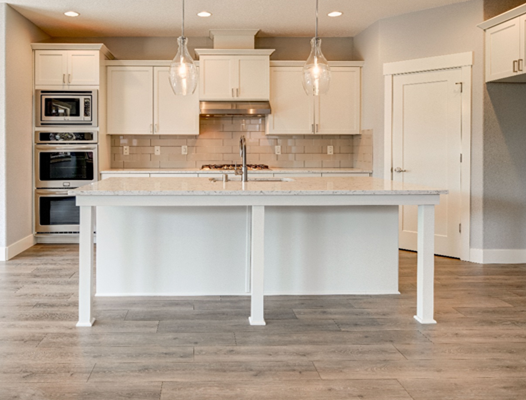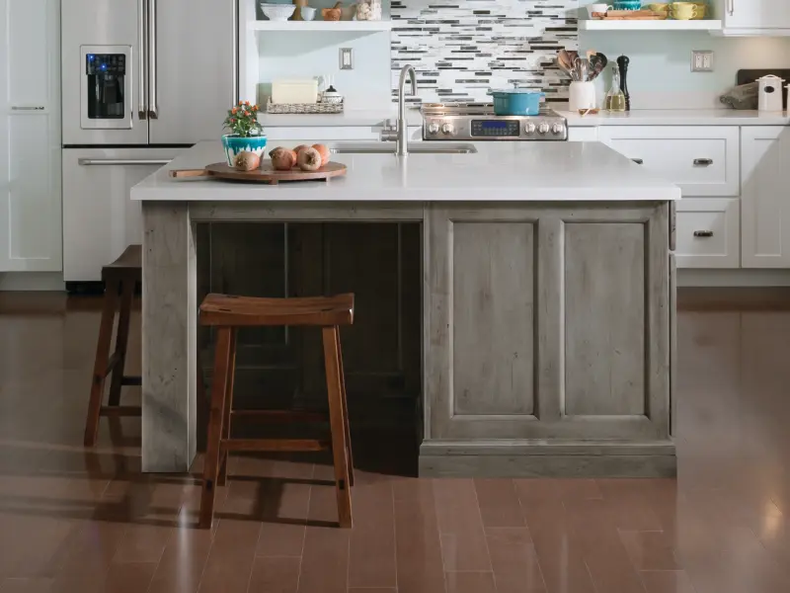Boost Your Eating Experience with a Kitchen Island with Legs
Boost Your Eating Experience with a Kitchen Island with Legs
Blog Article
Transform Your Kitchen With a Sleek Island With Legs for Extra Workspace
In contemporary kitchen layout, the consolidation of a sleek island with legs has actually arised as a useful yet stylish remedy for improving workspace. The one-of-a-kind style of the legs allows for a feeling of openness, promoting motion and interaction within the cooking area atmosphere.
Advantages of a Kitchen Island
Enhancing the functionality and visual allure of a kitchen area, a kitchen island functions as a flexible focal point in contemporary cooking areas. Among the primary advantages of a kitchen island is its capacity to supply additional office, helping with dish preparation and different cooking tasks. This added surface is very useful for those who appreciate cooking and require area for multiple active ingredients and tools.
Moreover, a kitchen island can improve social communication, creating a gathering factor for friends and family. It encourages informal dining and conversation, making it a perfect place for casual meals, treats, or drinks while meals are being prepared.
Furthermore, kitchen islands supply sufficient storage remedies, typically incorporating cupboards or racks that aid declutter countertops (kitchen island with legs). This organization contributes to a much more reliable cooking setting, where vital things are easily available
In addition, islands can accommodate various appliances, such as cooktops or sinks, mixing functionality with layout. Finally, they can elevate the overall aesthetic of the kitchen area, enabling for personalization with materials, colors, and styles that match the home's design. In summary, a kitchen island is a diverse addition that improves both functionality and livability in culinary rooms.
Picking the Right Design
When picking the ideal layout for a cooking area island, it is important to think about both the performance and design that ideal fit the space. The island must balance with the existing kitchen style, whether it be contemporary, rustic, or typical. Products play an important function; options like timber, quartz, or stainless steel can affect the general visual and longevity.
Size is an additional vital factor. Make sure the island is in proportion to the cooking area, enabling for adequate pathways and accessibility (kitchen island with legs). A properly designed island should not block traffic flow or prevent motion between appliances

Consider including functions such as open shelving or integrated storage space to enhance capability without compromising design. Lights is equally important; necklace lights can add visual passion while supplying ample lighting for tasks. Eventually, the best style ought to reflect individual taste while fulfilling useful demands, making the kitchen area both useful and inviting.
Maximizing Workspace Effectiveness
Performance in the kitchen area can considerably boost the overall food preparation experience, making it vital to make the most of work space effectively. A properly designed cooking area island can serve as the center of culinary activities, supplying ample area for food plating, preparation, and Source food preparation. To optimize this area, think about including multifunctional elements such as built-in cutting boards, pull-out drawers, or shelving that keeps crucial devices and ingredients within arm's reach.
Furthermore, the calculated positioning of the island in connection to various other cooking area elements is important. Placing the island near the cooktop and fridge allows for smooth operations, reducing unneeded activity. Implementing open shelving or hanging storage space can additionally reduce clutter, ensuring that utensils and spices are quickly available.

Ultimately, a thoughtfully developed kitchen island optimizes work area effectiveness, allowing a smoother cooking process and producing a much more pleasurable kitchen area atmosphere. By prioritizing organization and ease of access, you can transform your culinary room right into a center of efficiency.
Designing Your Island With Design

Begin by picking a shade scheme that enhances your existing decor. Incorporate decorative aspects such as vases, bowls, or trays to display seasonal fruits or fresh blossoms, adding a touch of natural charm. Think about utilizing elegant containers to arrange kitchen area fundamentals, making sure that your island continues to be clutter-free while boosting its aesthetic appeal.
Layering is crucial; use different heights and structures to create visual interest. For instance, pile recipe books or position a trendy reducing board together with your ornamental items. kitchen island with legs. This not just enhances ease of access but additionally presents an inviting atmosphere
Lights is an additional necessary element. Pendant lights over the island can give illumination while working as a layout declaration. Select components that integrate with your kitchen area's overall design, Our site whether contemporary, rustic, or eclectic.
Maintenance Tips for Longevity
To guarantee your kitchen area island remains a magnificent centerpiece for years ahead, regular upkeep is vital. Start by cleansing the surface regularly with a moderate soap and water remedy, avoiding rough chemicals that can damage the coating. For wooden surface areas, think about making use of a devoted timber cleaner and applying a food-safe mineral oil occasionally to preserve its gloss and safeguard versus moisture.
Evaluate the legs and any kind of hardware consistently for indications of wear or looseness. Tighten up screws or bolts as needed to protect against wobbling or instability. Use coasters and reducing boards to protect against scratches and discolorations if your island features a countertop made of stone or quartz. When it comes to natural stone, sealing it yearly will assist maintain its honesty.
Additionally, avoid putting hot pots or frying pans straight externally, as this can trigger thermal shock and bring about damages. If you notice any scratches or dents, address them immediately with proper fixing packages made for your island's product. By sticking to these upkeep pointers, your cooking area island will certainly not just maintain its visual allure but likewise serve you well for years ahead.
Conclusion
Integrating a smooth kitchen island with legs significantly enhances both performance and visual allure. Sticking to upkeep ideas additionally makes sure the durability of the island, solidifying its duty as a crucial feature in modern-day kitchen area layout.
In modern cooking area layout, the unification of a sleek island with legs has emerged as a sensible yet elegant remedy for improving work space.Enhancing the performance and aesthetic allure of a kitchen area, a cooking area island serves as a functional centerpiece in contemporary cooking rooms. In summary, a kitchen area island is a complex addition that boosts both functionality and livability in culinary additional resources areas.
When picking the right design for a kitchen area island, it is crucial to consider both the performance and design that ideal match the room. Adhering to maintenance suggestions better makes certain the long life of the island, strengthening its role as a necessary attribute in modern-day kitchen design.
Report this page